Removal Procedure-Front
Caution: Ensure that the vehicle is properly supported and squarely positioned. To help avoid personal injury when a vehicle is on a hoist, provide additional support for the vehicle on the opposite end from which the components are being removed.
- Hoist the vehicle.
- Disconnect the electrical connector from the oxygen sensor (O2S).
- Remove the exhaust pipe flange to front exhaust manifold nuts (3).
- Remove the exhaust pipe crossover flange nuts (2).
- Remove the left and right lower stabilizer link to stabilizer nuts.
- Remove the right side stabilizer bar to cradle bolts.
- Rotate the stabilizer bar upward to provide clearance for the exhaust pipe removal.
- Separate the downpipe from the exhaust pipe, twist/rotate to clear the rear flange and remove.
- Fully remove and discard the used gaskets.
- Remove the oxygen sensor if transferring to a new exhaust pipe.
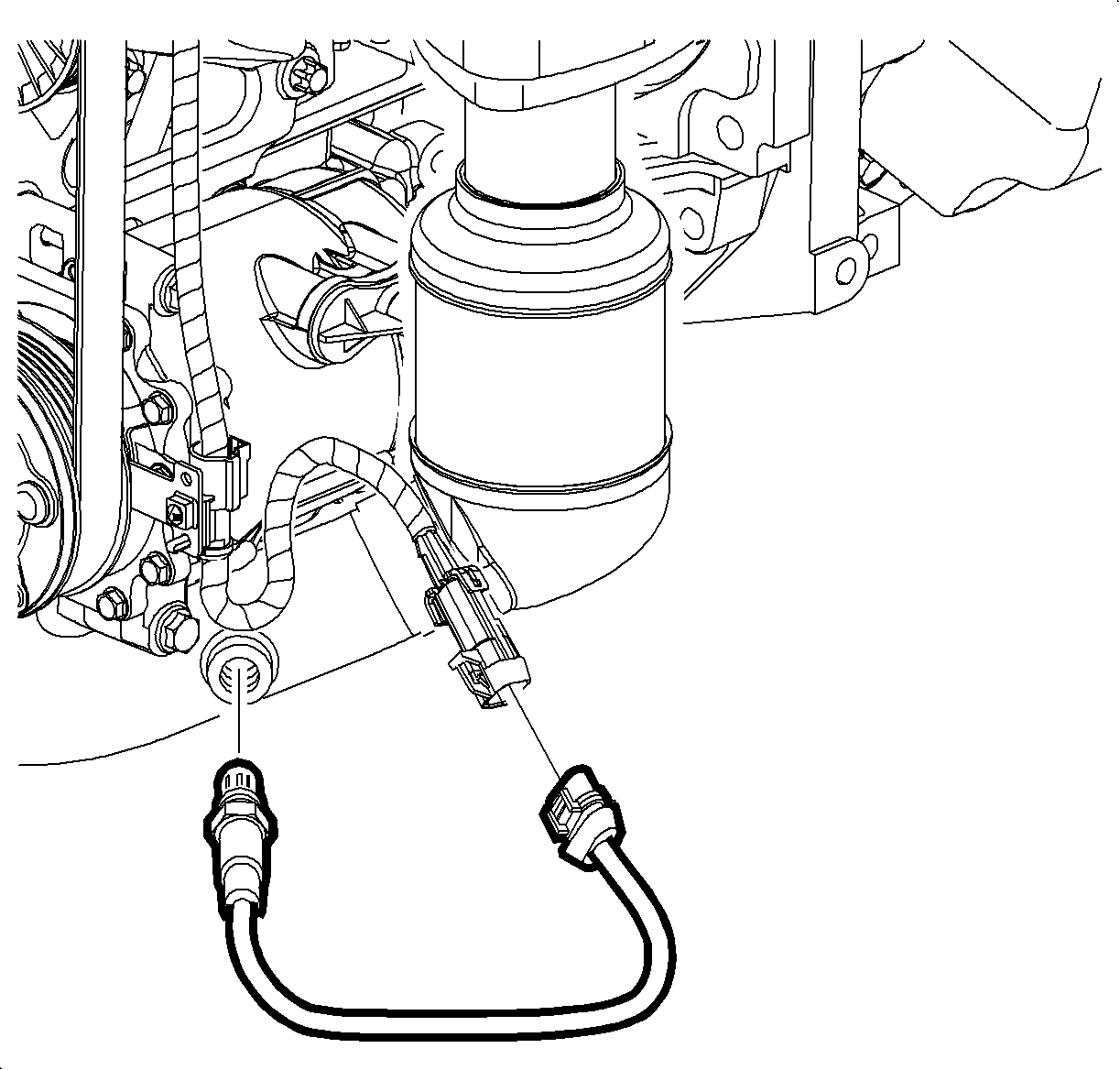
Important: Do not apply silicone products to the oxygen sensor.
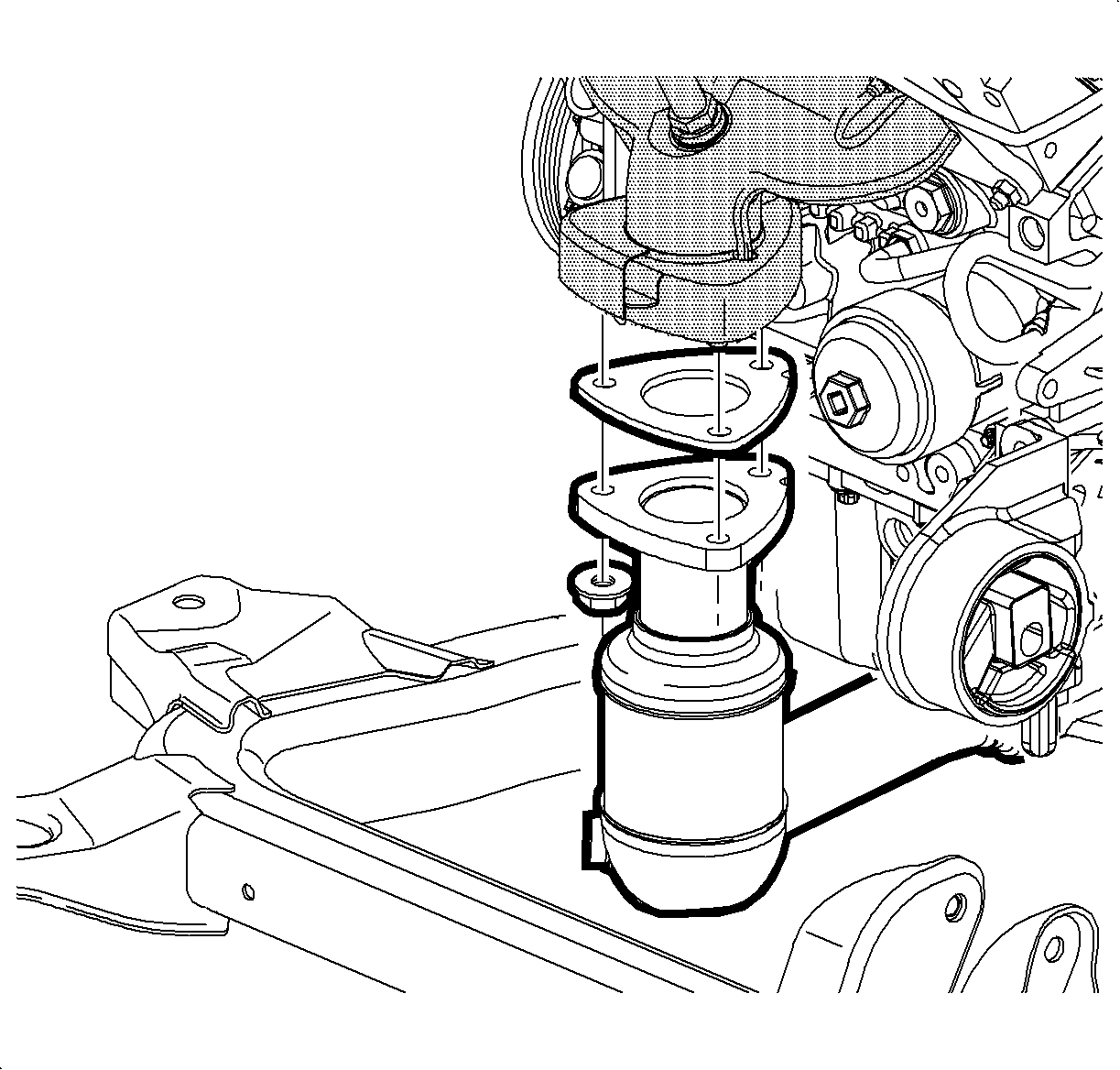
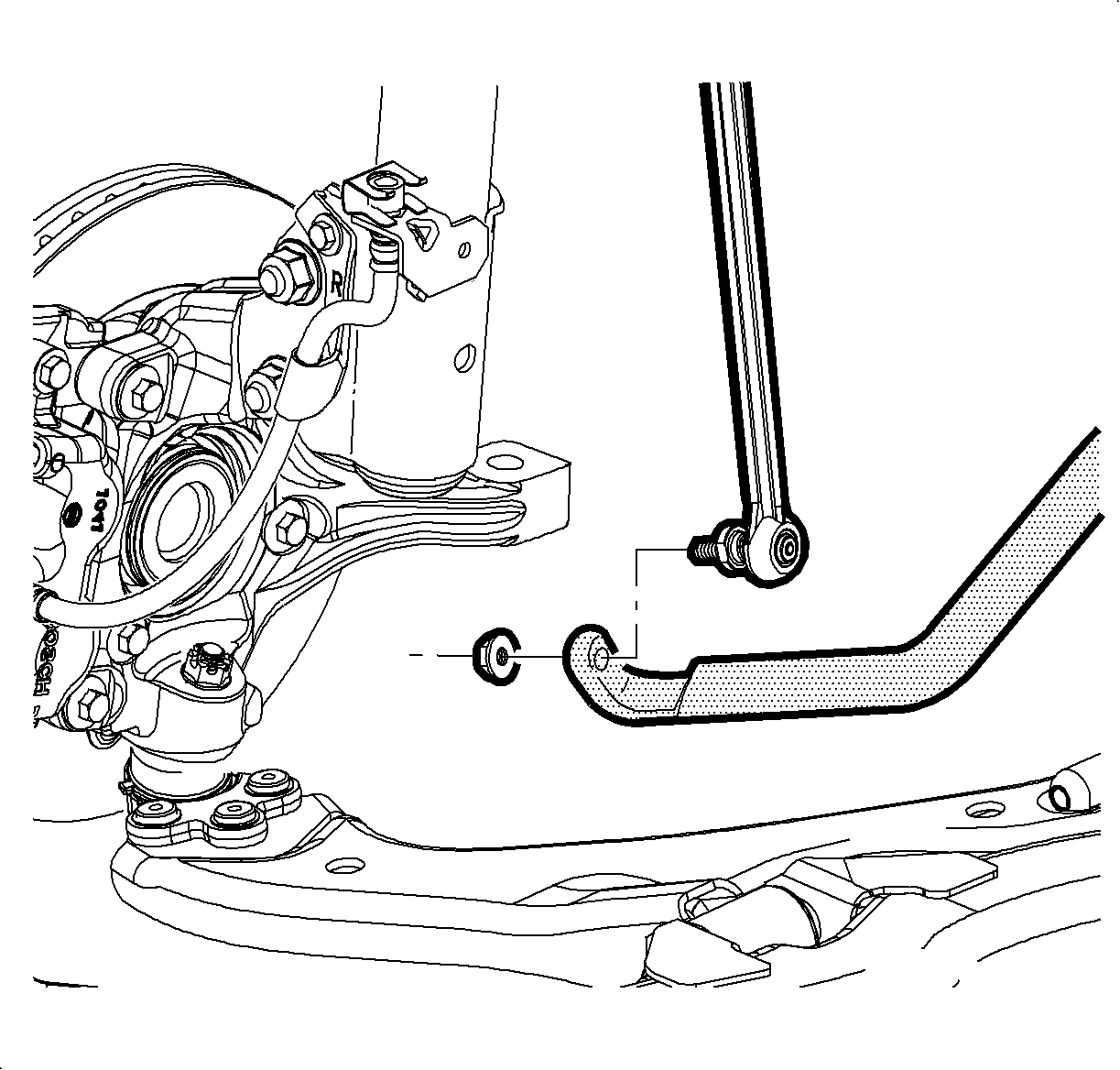
Important: Hold the link stud from rotating when removing nut. Discard the used nuts.
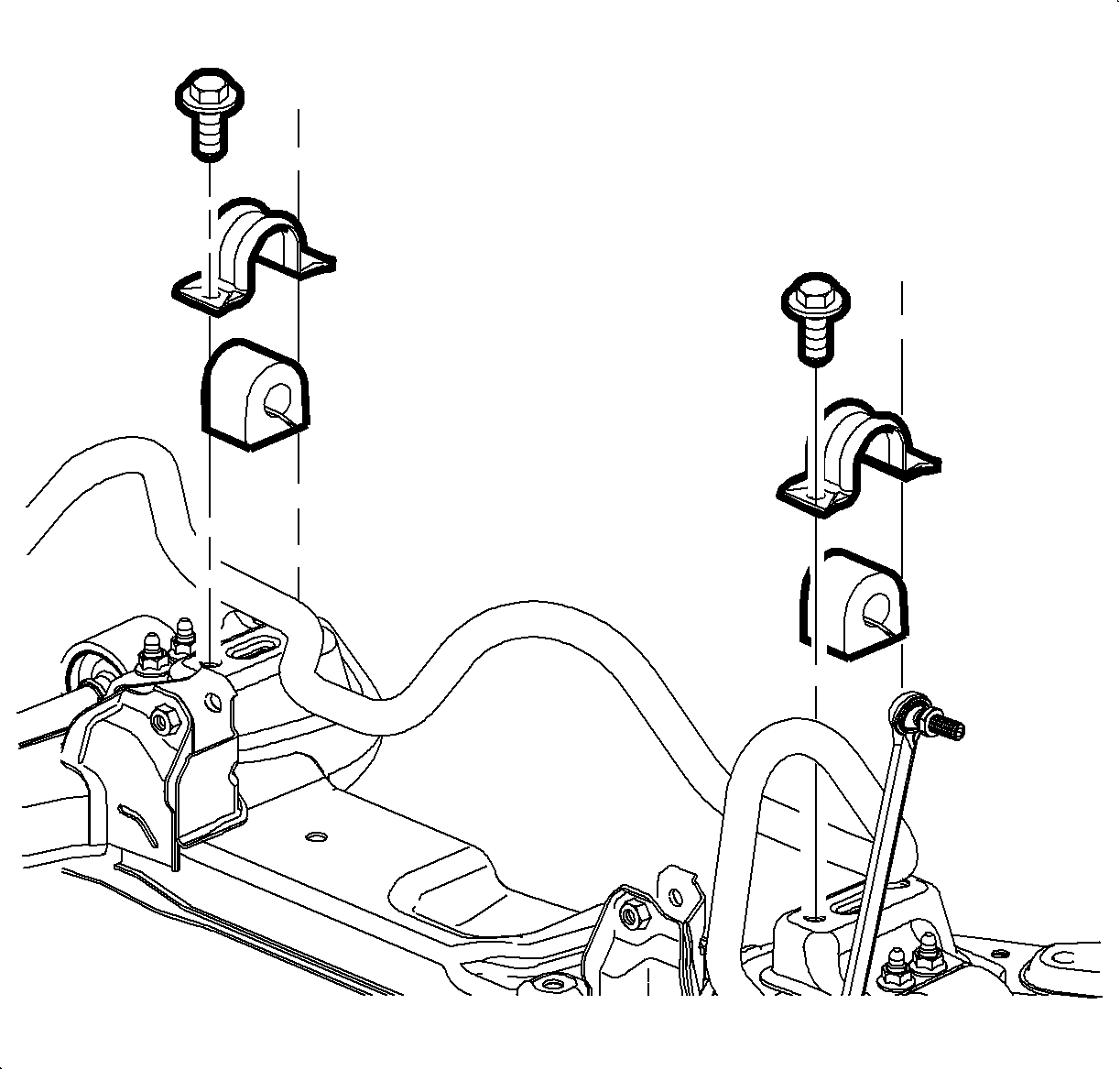
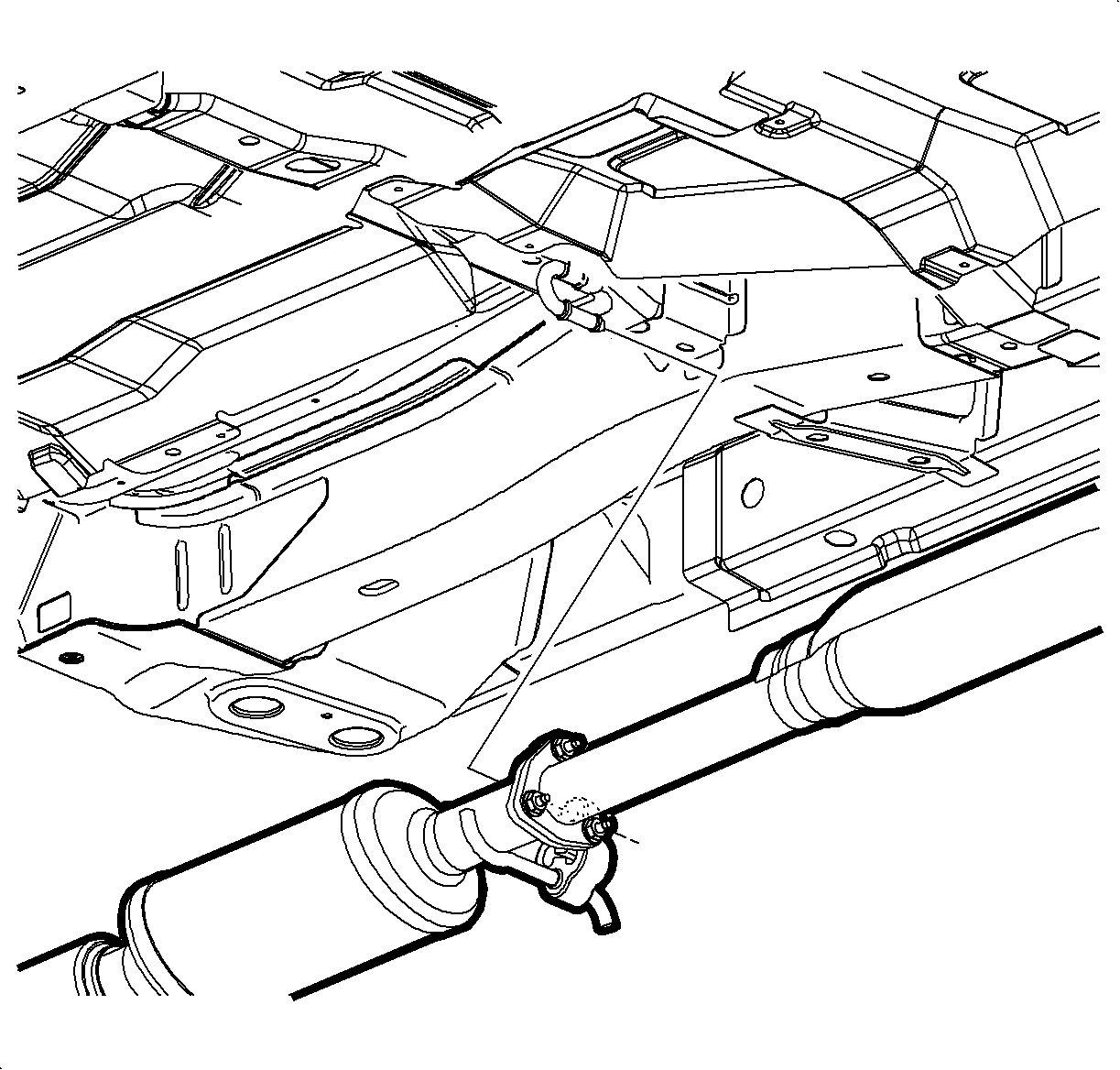
Installation Procedure-Front
Notice: Excessive flexing of the exhaust pipe may damage the flex coupling. Limit flexing to 12 degrees.
- Position pipe into vehicle, and install new gasket onto manifold studs.
- Assemble exhaust pipe to manifold, install new nuts and hand tighten only.
- Install the new gasket onto the exhaust pipe rear flange.
- Assemble the front pipe to rear pipe, install the nuts and tighten.
- Tighten the front pipe to manifold nuts.
- Install the oxygen senor and tighten.
- Pull the stabilizer bar into position, install the mounting bolts and tighten.
- Position the lower stabilizer link to stabilizer bar. Install new nuts and tighten.

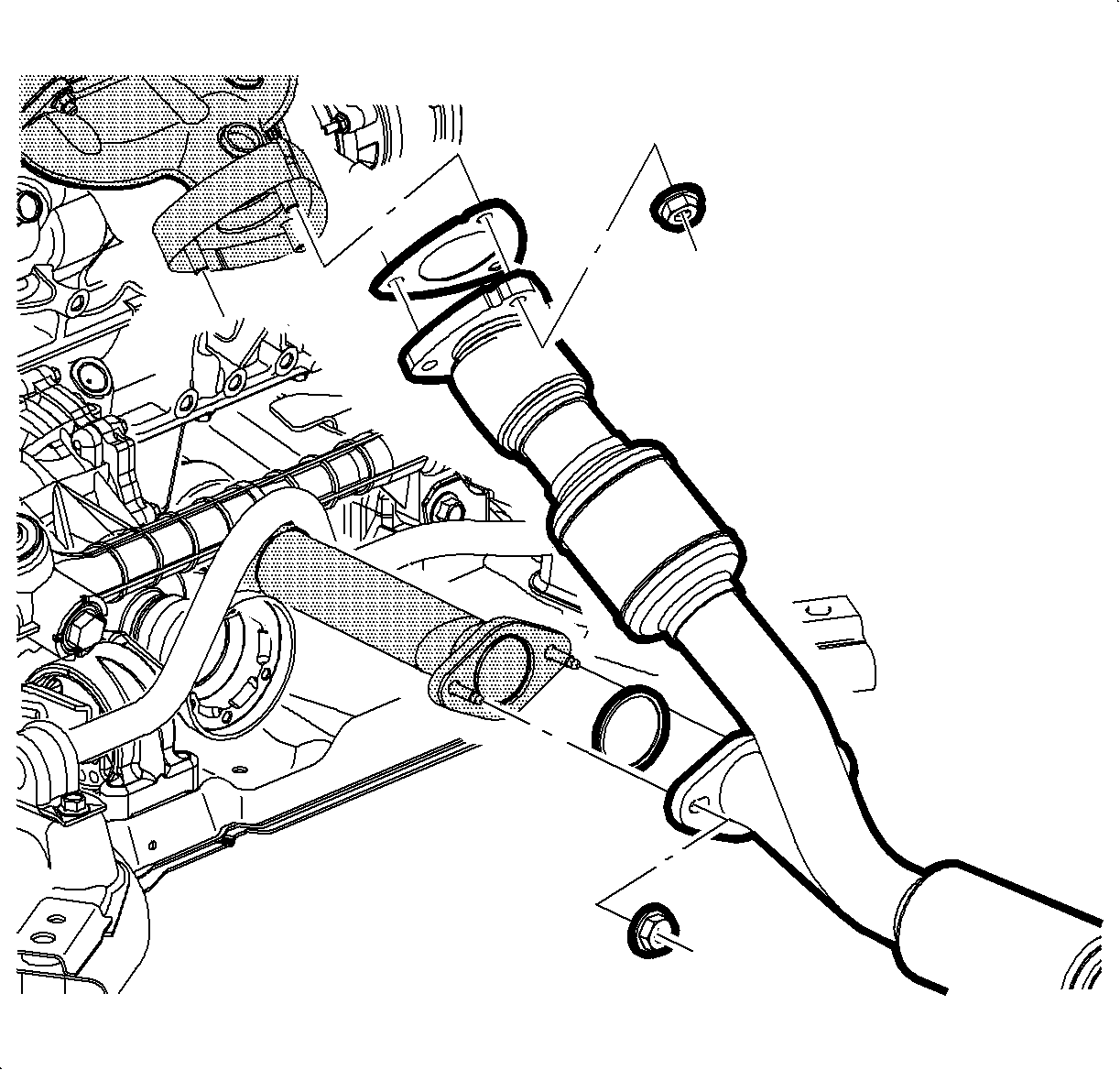
Notice: Refer to Fastener Notice in the Preface section.
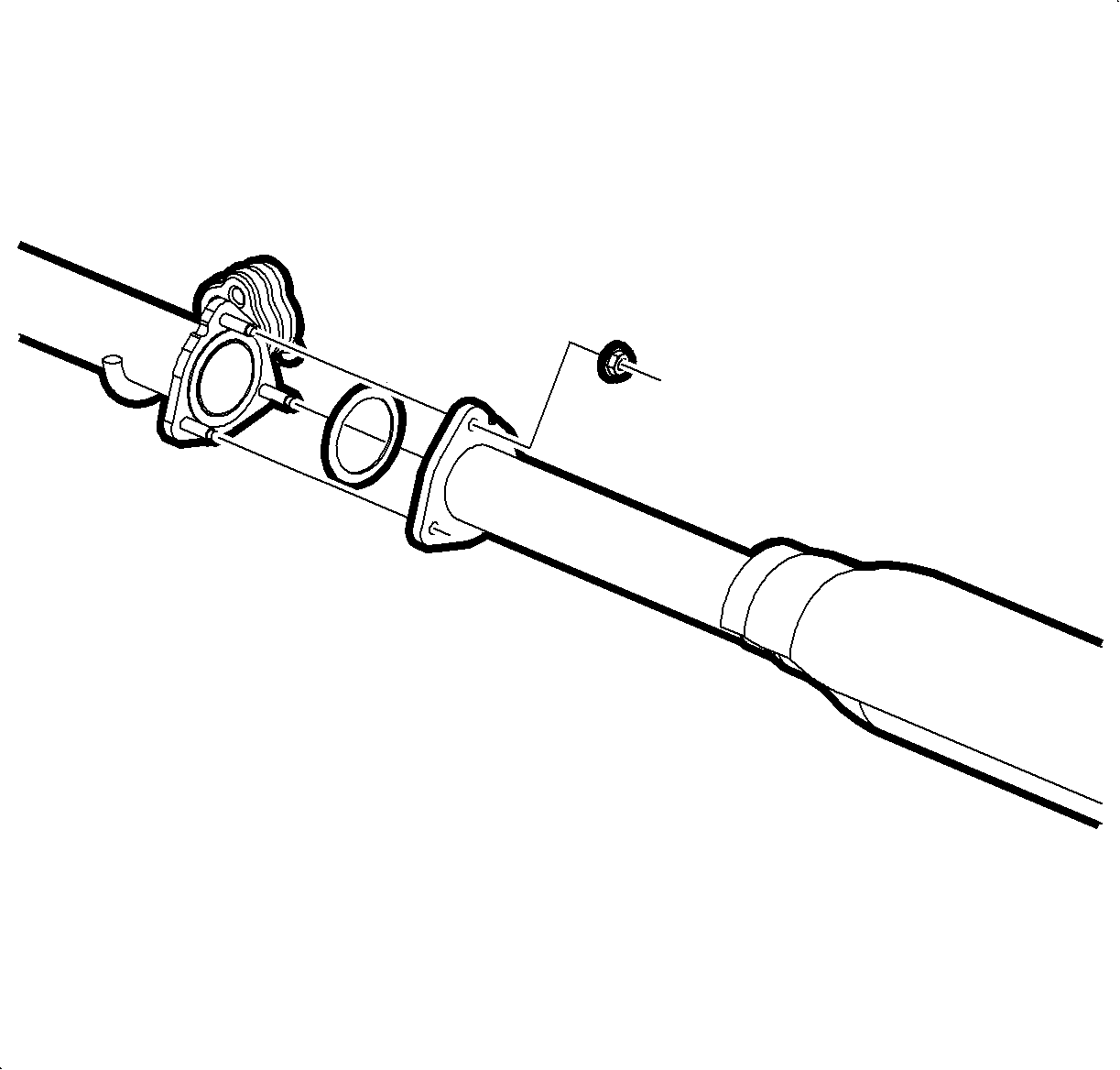
Tighten
Tighten the front pipe-to-rear pipe nuts -
L81 to 30 N·m(22 lb ft).
Tighten
Tighten the front pipe-to-manifold nuts -
L81 to 42 N·m (31 lb ft).
Notice: Silicone based products will contaminate the HO2S. Use only a nickel based anti-seize compound that does not contain silicone.

Tighten
Tighten the oxygen sensor - L81 to 45 N·m
(33 lb ft).

Tighten
Tighten the stabilizer bar mounting bolt -
L81 to 50 N·m (37 lb ft).

Tighten
Tighten the stabilizer bar-to-stabilizer link nut -
L81 to 65 (48 lb ft).
Removal Procedure (Rear)
- Hoist the vehicle.
- Disconnect the electrical connector from the oxygen sensor (O2S).
- Remove the exhaust pipe flange to rear exhaust manifold nuts (3).
- Remove the exhaust pipe flange to intermediate pipe nuts (3).
- Separate the hanger from the rubber isolator.
- Separate the flange from the studs, and remove the rear exhaust pipe.
- Remove the oxygen sensors if transferring to new exhaust pipes.

Caution: Ensure that the vehicle is properly supported and squarely positioned. To help avoid personal injury when a vehicle is on a hoist, provide additional support for the vehicle on the opposite end from which the components are being removed.
Notice: Excessive flexing of the exhaust pipe may damage the flex coupling. Limit flexing to 12 degrees.
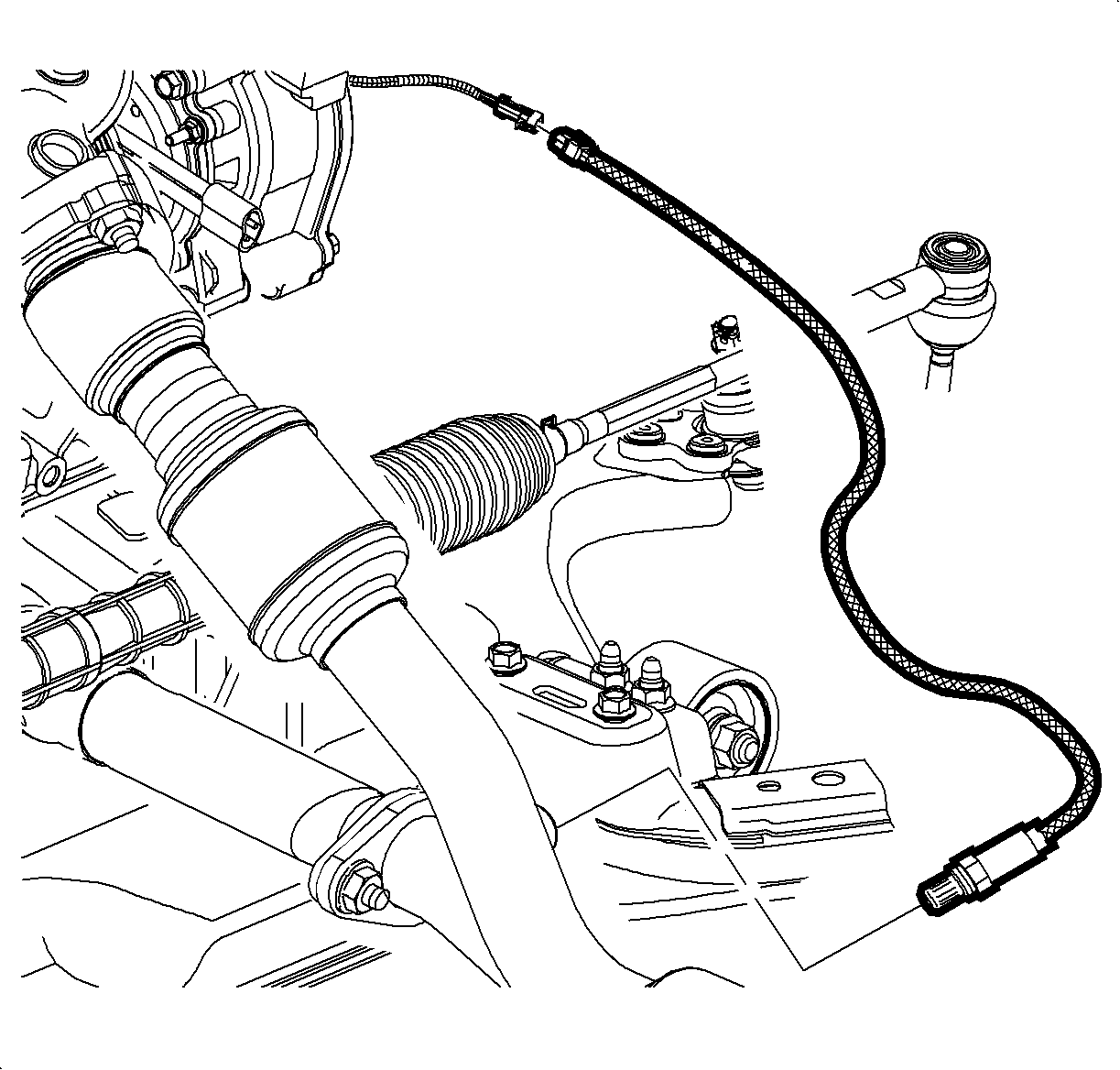
Important: Do not apply silicon products to the oxygen sensor.
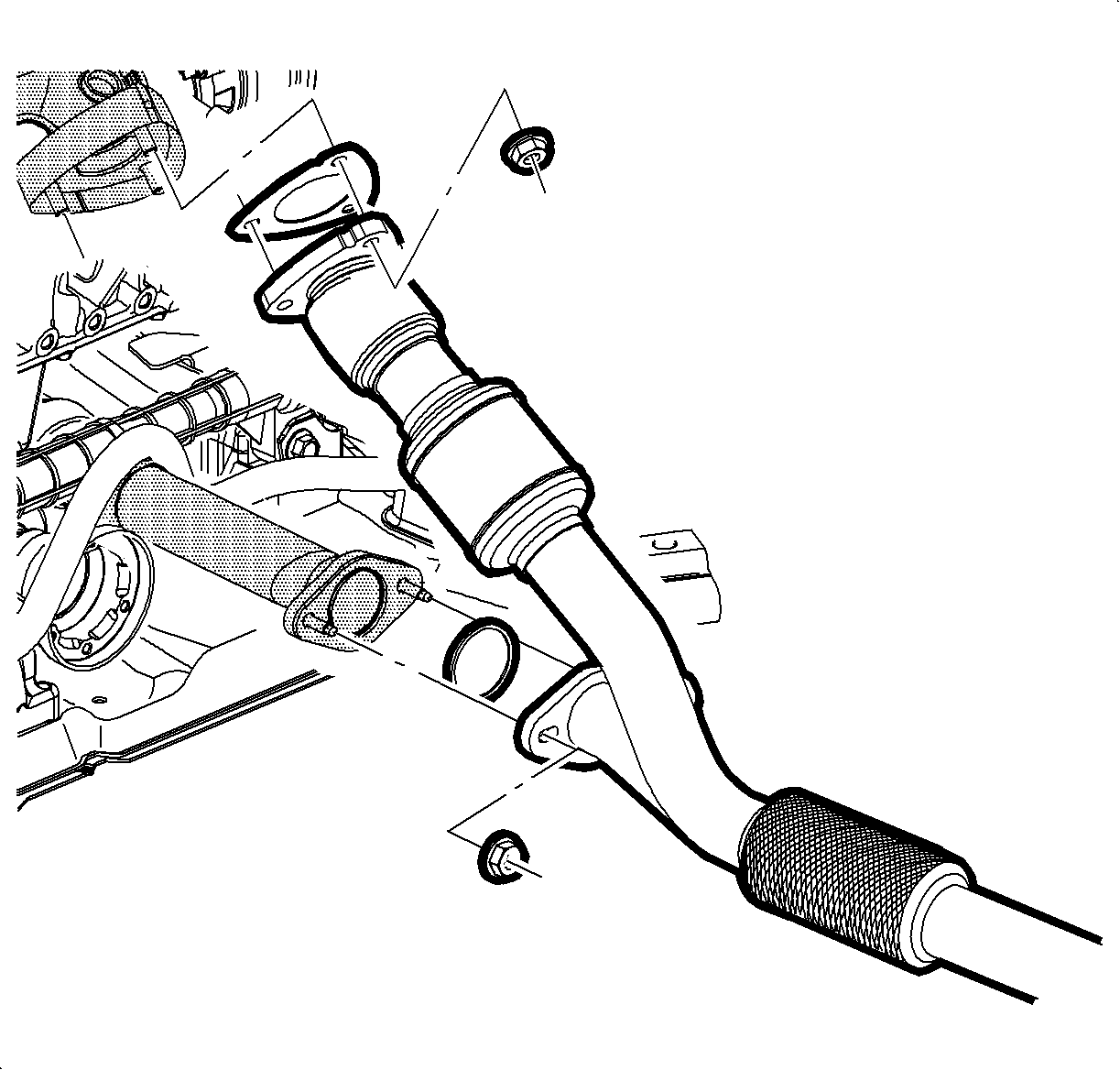
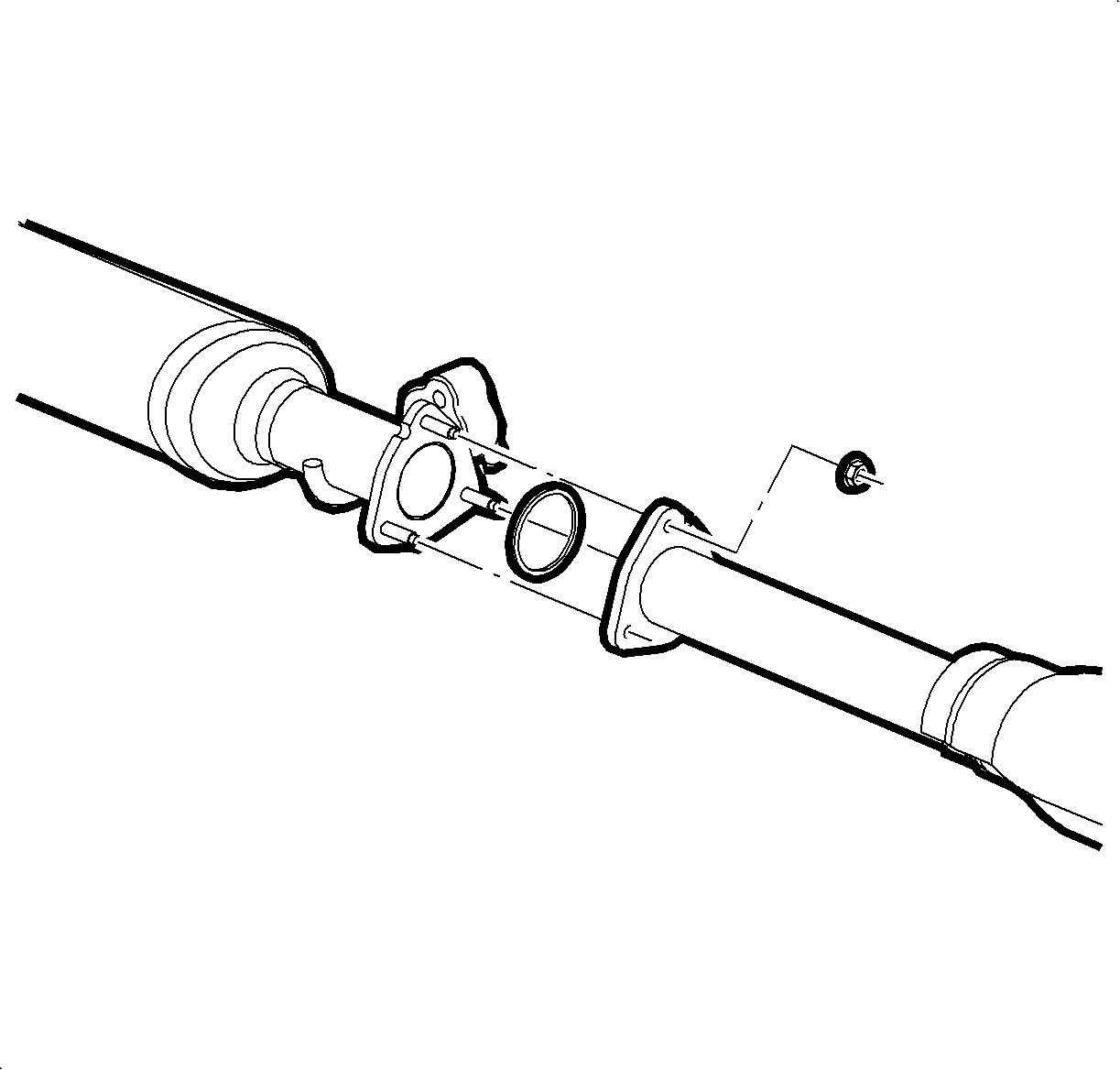

Installation (Rear)
- Position the pipe into the vehicle front and rear flanges and install a new gasket onto the manifold studs.
- Assemble the exhaust pipe to manifold and install new nuts -- hand tighten only.
- Install the new gasket onto the exhaust pipe rear flange.
- Assemble the front pipe to rear pipe, install the nuts and tighten.
- Tighten the front pipe to manifold nuts.
- Install the oxygen sensor and tighten, connect the electrical connector.

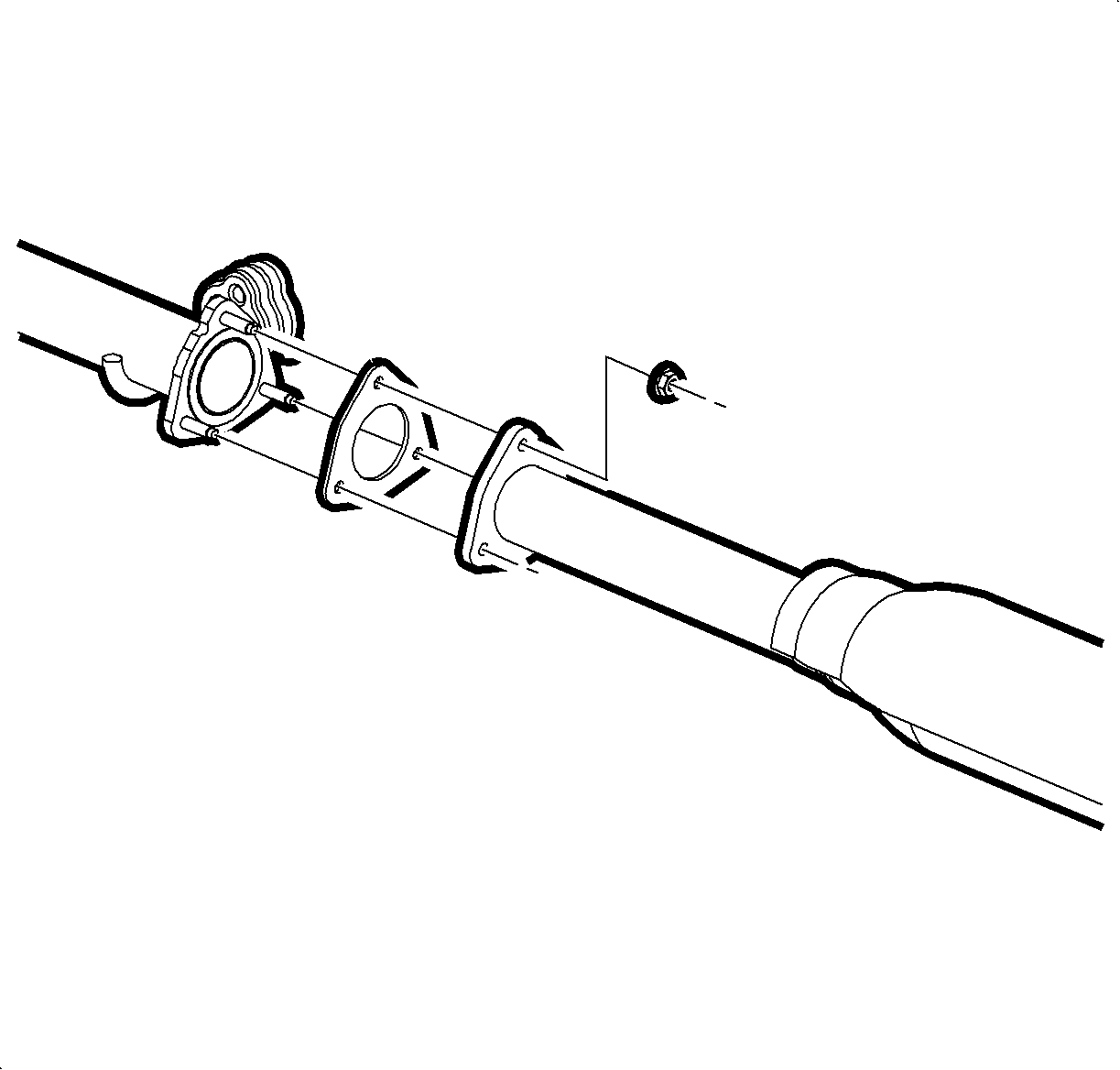

Tighten
Tighten the front pipe-to-rear pipe nuts -
L81 to 30 N·m (22 lb ft).
Tighten
Tighten the front pipe-to-maniold nuts -
L81 to 42 N·m(31 lb ft).

Notice: Silicone based products will contaminate the HO2S. Use only a nickel based anti-seize compound that does not contain silicone.
Tighten
tighten the oxygen sensor - L81 to 45 N·m
(33 lb ft).
